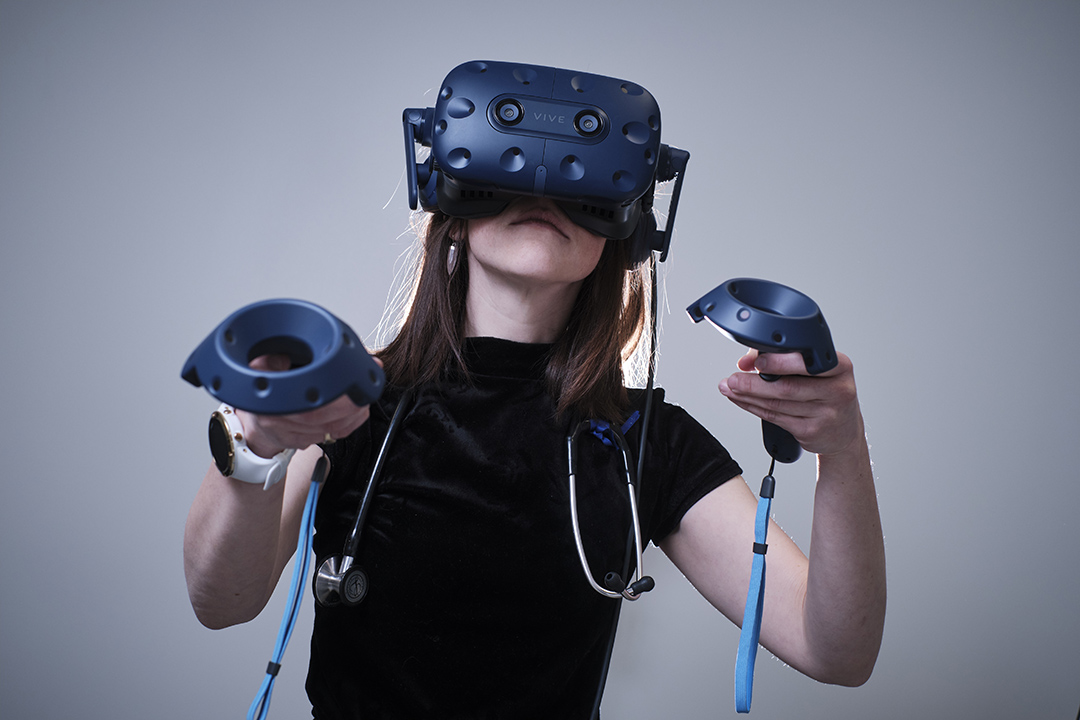
Using virtual reality to help nursing students
One of the best ways a student can learn is through hands-on experience. But what if the environment in which the hands-on experience takes place causes a student so much anxiety they can’t actually learn what they need to?
By KYLIE KELSO
Dr. Don Leidl (EdD) of the University of Saskatchewan (USask) College of Nursing and a team of researchers is proposing the idea of using virtual reality (VR) technology as a way to help students through clinical experiences that may traditionally be anxiety provoking.
“Clinical education is an integral part of a professional nursing curriculum. However, clinical placements create some of the most anxiety for students, making the clinical environment itself a barrier to student learning,” said Leidl.
One example of a clinical placement that may cause a student to experience anxiety is mental health. A placement in mental health is one setting where simply being in the environment makes it difficult for students to learn foundational nursing knowledge. Students may become so anxious about doing a mental health exam and suicide risk assessment that they actually can’t complete it.
Leidl said employing virtual reality technology could help.
“Using virtual reality, we will create an environment, providing learning opportunities that are similar to a traditional mental health placement, for a group of students in the acute mental health clinical environment,” he said. “A branching 360-degree VR video learning scenario, in which a student is presented with a patient requiring a mental status examination and suicide risk assessment, will begin. The student will make decisions regarding the path taken by the interviewer during the assessment, resulting in the scenario to unfold in response to the critical decisions that are made.
“We are hopeful that by giving students an opportunity to take part in a virtual learning scenario, both before and during their actual clinical placement, their anxiety about completing a mental health exam and suicide risk assessment with be reduced, while their knowledge, confidence, and competence increase.”
The pilot project will include one student group with access to the virtual reality-learning scenario before and during their clinical experience, while another clinical group will take part in a traditional mental health placement.
“To determine the effectiveness of integrating virtual reality into clinical education, both groups will be tested using a pre-, post-, and distant-post format to assess their placement-related anxiety and overall mental health exam and suicide risk assessment knowledge and retention,” Leidl said.
The multidisciplinary team working on the research project includes: co-applicants Dr. Hua Li (PhD), USask College of Nursing; Dr. Jay Wilson (EdD), USask College of Education; Dr. Madeline Press (PhD), Saskatchewan Polytechnic School of Nursing; Ryan Banow, USask’s Gwenna Moss Centre for Teaching and Learning; Dr. Manal Kleib (PhD), University of Alberta Faculty of Nursing; Karyn Kawula, Saskatchewan Health Authority; as well as collaborators Dr. Mike Wesolowski (PhD), USask College of Medicine; and Scott Bobowski, Saskatchewan Health Authority.
The project has received funding through a Saskatchewan Health Research Foundation Collaborative Innovation Development Grant.

